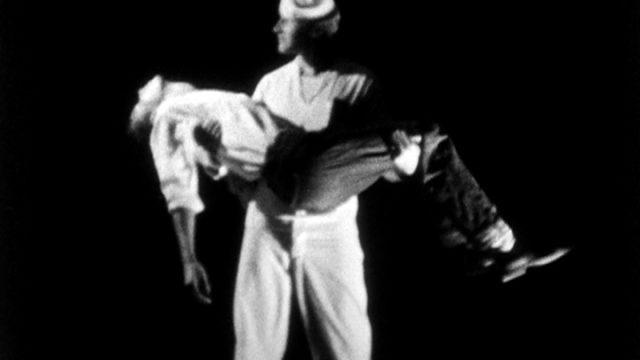Watching a Kenneth Anger film over the 4th of July weekend feels more transgressive than I expected, even one with a name like Fireworks. Particularly now, in our current explosive political climate, Anger’s work takes on a special significance as a document of free speech and the independence of creating your own art. Made well before Stonewall or the New Queer Cinema movement, but after the height of the avant-garde era of the ’20s and ’30s, the postwar environment seems an odd time for Anger to have made this clearly homoerotic, surreal narrative. Fireworks was caught in several criminal cases, and it eventually became a test case for free speech with the California Supreme Court in the late 1950s. Now, 70 years later, this short film has become all the more important, in an atmosphere of censorship, book bans, and Supreme Court decisions about freedom and persecution.
Fireworks is a precursor to the Athletic Model Guild films of scantily clad men posing around a pool wearing various types of uniform, flexing muscles under the guise of physical fitness instruction. Religious and homoerotic iconography commingle, not that Anger draws much distinction between them. Framed as a dream sequence, the events play out as a nocturnal flight of fancy (meeting handsome uniformed strangers in a bar), before devolving into a nightmare (said handsome strangers chase the protagonist down and physically assault him). The surreality of the dream’s events put Inception to shame: lighting a cigarette with a bundle of sticks (there’s a name for that, but it escapes me), the crotch rocket fireworks, and the burning Christmas tree headdress (how many would get this as a Halloween costume, I wonder?).
This is what makes Fireworks worth viewing and saving. Why are the films of Kenneth Anger, with their jerky camera movements, amateurish acting, and heavy-handed editing, still remembered? Certainly, much of Anger’s posterity is due to time, place, and connections, the same as all filmmakers. This is, after all, the man who wrote Hollywood Babylon; he was no stranger to the movers and shakers. Consider Bob Mizer’s beefcake films of the ’50s and ’60s, and the endless Tik Toks made with varying qualities of technology and degrees of competency today. There are more similarities than differences between these different eras of filmmaking; only the details and technology have changed. Who are the Kenneth Angers of today, and will their shot-on-iPhone YouTube videos be thought of in the same regard as Anger’s work in 70 years time? The availability of Fireworks on the same platform is very likely to inspire new queer and avant-garde filmmakers, at least if they know to look for it. What the censors and banners fail to do the almighty algorithm may succeed at.


